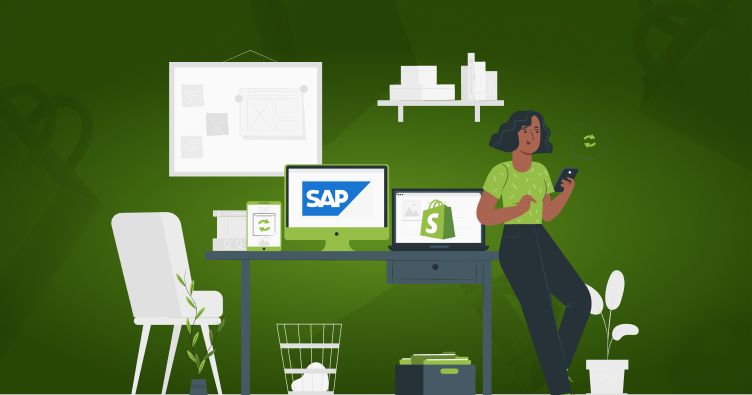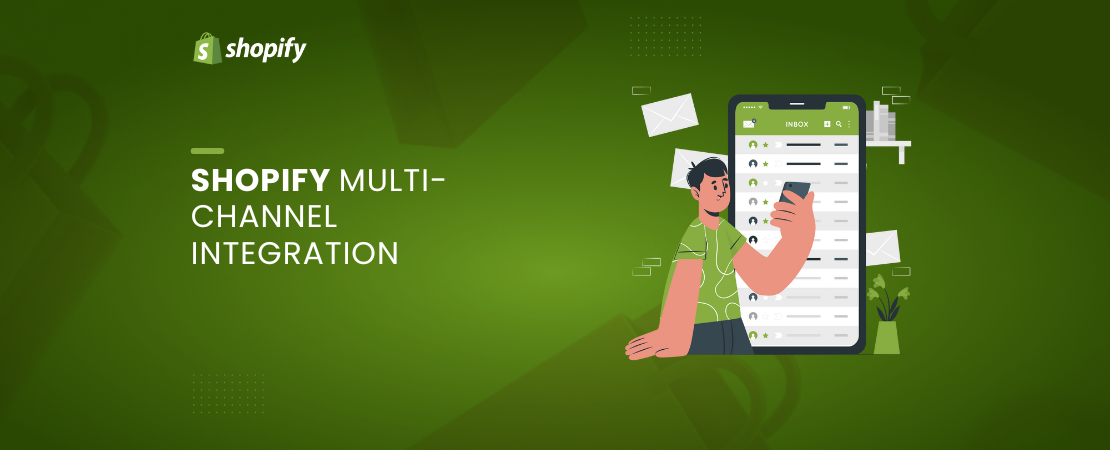Choosing the right platform for your online business can significantly impact your success. This blog compares Webflow and Shopify – two leading website CMS. Webflow excels in design flexibility and customization, making it ideal for those who prioritize unique aesthetics and a tailored user experience. Shopify is a robust e-commerce platform with comprehensive tools for managing online stores efficiently.
Whether you create a visually stunning website or a fully operational online store, knowing the strengths and limitations of each platform helps you make an informed decision.
Related: Migrate from Webflow to Shopify
Webflow vs Shopify at a Glance
Webflow and Shopify are popular platforms for building and managing e-commerce stores. However, each platform has different features and serves varying purposes. Here are both platforms at a glance:
What is Webflow?
Webflow is a website builder that helps businesses design and build their online stores without needing coding experience. The drag-and-drop interface and pre-built templates speed up the process, making Webflow a fan favorite among designers and developers. This way, they have more control over their websites.
What is Shopify?
Shopify is the most commonly used e-commerce platform globally owing to its simplicity, features, and scalability. A Shopify store has all the tools and features required to build online stores with every essential integration. Many businesses choose Shopify because they don’t have to worry about the technicalities of setting up an online store. They also choose professional Shopify development services to handle all development so they can focus on business strategy.
Webflow vs Shopify Comparison
Picking the right platform hinges on various factors influencing the business in the short and long term. This section compares the two platforms in four key areas: cost, customization, features, and customer support.
Costing
The platform cost is a significant component of the decision-making process since it directly impacts your bottom line. Here’s a cost comparison of Webflow vs Shopify:
Webflow
Four Webflow pricing plans cater to various e-commerce needs and budgets:
- Free plan has limited features that are ideal for testing and prototyping.
- Site Plan at $12 per month, suitable for small businesses and personal websites.
- Business Plan at $25 per month. This price includes additional features like advanced analytics and custom domain mapping.
- Enterprise Plan: Custom pricing for large businesses and agencies with complex requirements.
Shopify
Four Shopify pricing plans cater to various e-commerce needs and budgets:
- Basic at $25 per month with simple e-commerce features.
- Shopify at $65 per month with five additional staff accounts
-
- Advanced at $399 per month with additional staff account and checkout capabilities
- Shopify Plus at $2,300 per month on a 3-year contract. This is best for large businesses with massive product catalogs and customer bases.
Customization and Flexibility
Modern e-commerce businesses heavily rely on branding, image, and user experience to attract and retain customers. Brands using Webflow or Shopify can benefit from each platform’s customization and flexibility. Here’s what that looks like:
Webflow
- Webflow allows businesses to customize their stores extensively and develop the user experience precisely as they want.
- Add custom HTML, CSS, and JavaScript code to the website for more advanced customizations. This might require professional experience, but the potential is immense.
- Webflow’s tools help the website add interactive animations, forms, and sliders with its built-in tools. This feature gives the website its unique image and identity.
- E-commerce stores can be optimized to look and run great on mobile phones, tablets, and computers.
Shopify
Brands using Shopify can choose from various customizable themes for their websites. Custom Shopify theme development allows these businesses to build their themes. The Shopify App Store and its thousands of apps can add new visual and functional features to the store.
These include animations, payment processors, inventory management, and more. Shopify allows custom coding into your store but is limited compared to Webflow. Shopify also comes with more out-of-the-box features than Webflow.
Features
Every business picks an e-commerce platform because of how much value it can offer them. This value comes from the features that come with the platform. This section expands on each platform’s features:
Features of Webflow
Here are Webflow’s features:
Design and Customization:
- Visual Editor to build websites visually without needing coding experience. Simply drag-and-drop design elements to build the interface.
- Use interactive elements to create dynamic websites with animations, sliders, and parallax effects. There are countless variations to design with this.
- A responsive design ensures the website looks and works great on all devices (mobile phones, tablets, and computers).
- Custom Code allows stores to add custom CSS, HTML, and JavaScript for advanced customization. Webflow shines when it comes to custom visual development.
- Version Control helps track changes to your website and quickly revert to previous versions.
Content Management:
CMS or content management system to easily manage content within Webflow. Webflow collections help organize content into collections for efficient management. Dynamic content helps create dynamic content based on specific conditions or data.
Performance and SEO:
Performance Optimization with Webflow is straightforward because the platform is designed for speed and performance. Webflow’s built-in SEO features improve your website’s search engine ranking through various SEO practices.
Features of Shopify
Here are Shopify’s features:
Online Store:
- Innovative product management helps manage complex product catalogs, inventory, and pricing.
- Stores can create product variants (e.g., size, color) to offer more options. This is particularly helpful for businesses with large product catalogs.
- Organize products into collections for more straightforward navigation. Quickly finding the right products is part of an intuitive interface.
- Personalize the store’s checkout process to improve conversions. The ideal checkout page has as few steps as possible to ensure the customer converts quickly.
Payments and Shipping:
- Payment gateways accept payments from multiple gateways, including credit cards, debit cards, PayPal, and Apple Pay.
- Set up Shopify shipping rates based on weight, destination, and other factors. These rates must be accurate because they affect the final total the customer is charged.
- Intelligent order fulfillment helps manage orders, track shipments, and notify customers. Customers often wait for shipment updates, and accurate information helps deliver that.
Marketing and Sales:
Email marketing tools help send marketing campaigns to customers. Many people underestimate the importance of email in modern marketing. Implement discounts, coupons, and promotions to boost sales. Nothing tempts more customers than the prospect of a good deal.
Offer gift cards to your customers as an incentive for signing up for your newsletter or making a large purchase. Reward repeat customers with loyalty points or discounts so they return and even bring more customers with them. Customers love being seen and individually rewarded, making them more likely to return.
Analytics and Reporting:
Track sales performance and identify trends with advanced sales analytics features. Analyze customer behavior and preferences with advanced customer analytics features. Measure the effectiveness of your marketing campaigns and whether your marketing efforts worked. Having irrefutable data paints a vivid picture of their performance.
App Store:
- Third-party apps, such as accounting, shipping, and marketing tools, expand Shopify’s functionality. Additionally, custom application development lets businesses develop apps with specific functionality.
Customer Support
Each platform offers its clients customer service to ensure they’re here to help in case of downtime or malfunction. Here’s how Webflow and Shopify customer service differ from each other:
Customer support of Webflow
- A help center with comprehensive online resources, e.g., articles, tutorials, and FAQs.
- Community forum to connect with other Webflow users to get help and learn from the community.
- Email Support to contact Webflow’s support team via email for assistance.
- Priority Support is available for users on higher-tier plans.
Customer support of Shopify
- Shopify helps the center by providing a comprehensive knowledge base (articles and tutorials).
- Community forum to ask questions and get help from various Shopify merchants.
- Live chat with Shopify’s support team for real-time assistance.
- Phone support will contact Shopify’s support team by phone.
- Priority support is available for users on higher-tier plans.
Pros and Cons of Webflow
E-commerce businesses considering Webflow as their platform should know the pros and cons of the platform:
Pros
- Webflow gives you complete control over the design and layout of your website. Businesses can build the proper form and function to emulate their brand identity.
- Custom code lets e-commerce stores add custom CSS, HTML, and JavaScript for advanced customization. Webflow is known for its modularity and ability to bend itself to accommodate customers.
- Webflow is known for its fast load times and excellent performance. Strong store performance is essential for it to operate in a competitive environment.
- Webflow includes hosting with all plans.
- A large and active Webflow community of users and developers pools experience and knowledge to ensure these businesses have the needed help and guidance.
Cons
- Webflows has a steeper learning curve compared to some other website builders. It isnt as simple as starting it up and building your online store.
- Webflow offers basic e-commerce functionality but is less comprehensive than Shopify for businesses with complex e-commerce needs. This is a significant reason why it trails compared to Shopify.
Pros and Cons of Shopify
Shopify has made a name for itself because of various benefits, but the platform isnt without its hurdles. Here are Shopify’s pros and cons:
Pros
- Shopify is designed specifically for e-commerce stores and offers a wide range of e-commerce features, making it one of the best available options.
- Shopify is user-friendly and accessible for everyone, including those with little technical experience.
- The Shopify App Store is a vast library of apps that can extend functionality and customize your store. E-commerce stores can implement specific applications for a particular functionality.
- Payment processing is easy with Shopify because it handles payments seamlessly, including multiple gateways and currencies. Having widespread payment support helps Shopify stand out from the rest.
- Shopify comes with excellent customer support, including live chat and phone support.
Cons
- Shopify charges transaction fees for payments processed through its built-in payment gateway. When budgeting for the business, keep these fees in mind.
- Shopify offers themes and customization options but is less flexible than Webflow for advanced design work. They’ve already sorted much of the development; additional cosmetic development is usually unnecessary.
- Shopify requires a monthly subscription fee, even for basic plans.
Conclusion
The debate between Webflow and Shopify largely hinges on your specific needs and goals. Shopify excels as a dedicated e-commerce platform, offering a comprehensive suite of tools designed for online selling, including robust inventory management, extensive payment options, and a user-friendly interface that simplifies the setup process.
Its built-in features cater well to businesses focused on maximizing sales and operational efficiency, making it the preferred option for those prioritizing e-commerce functionality.
On the other hand, Webflow stands out for its design flexibility and customization capabilities. It allows users to create visually stunning websites with high control over design elements, making it ideal for brands that prioritize aesthetics and unique user experiences.
However, its e-commerce features are more limited than those of Shopify, which may pose challenges for businesses aiming for extensive online retail operations. Ultimately, your decision should align with whether you value design creativity or comprehensive e-commerce tools more highly.
FAQs
Can Webflow accept payments?
Yes. Webflow accepts payments using its built-in E-commerce plan. Webflow supports Stripe, PayPal, Apple Pay, and Google Pay to ensure customers can pay however they like.
Is Webflow ecommerce worth it?
Yes. Webflow is a great option for e-commerce stores that want a customizable and visually appealing storefront. It is also a low-code option, making it great for business owners with limited coding experience.
Can I use Webflow and Shopify together?
No. Webflow and Shopify are separate platforms and cannot be used within the same store. Each platform has unique features and functionality.



